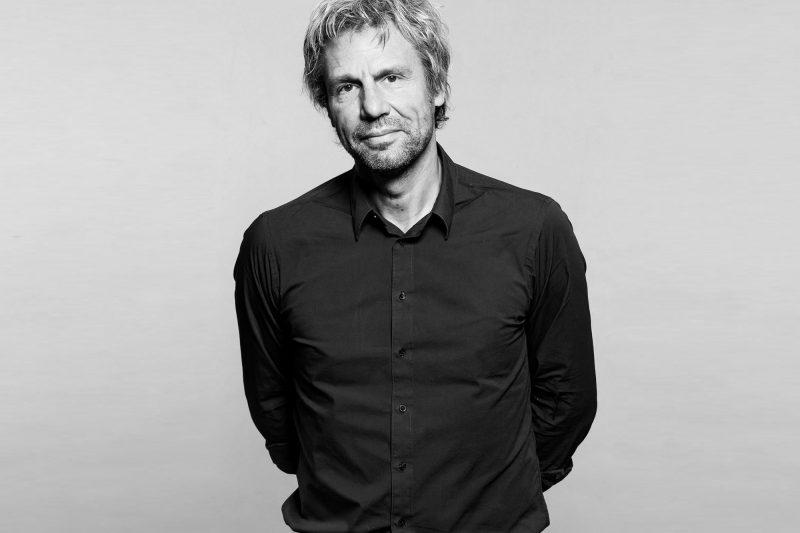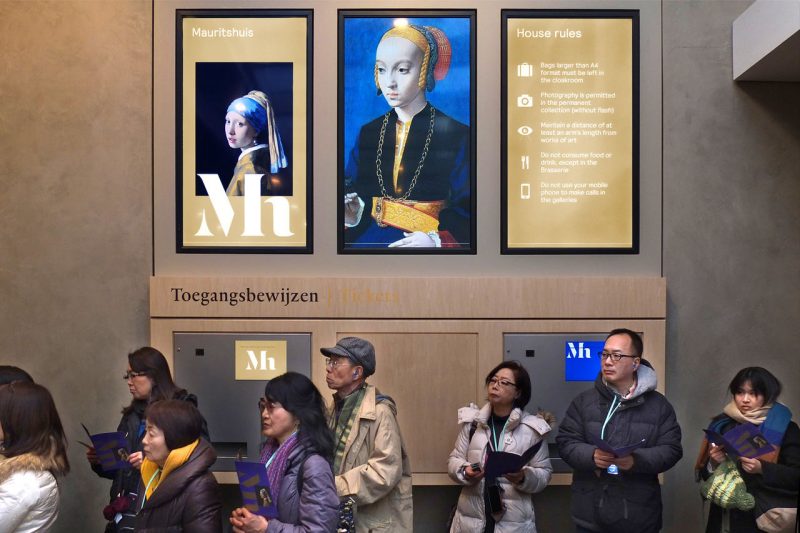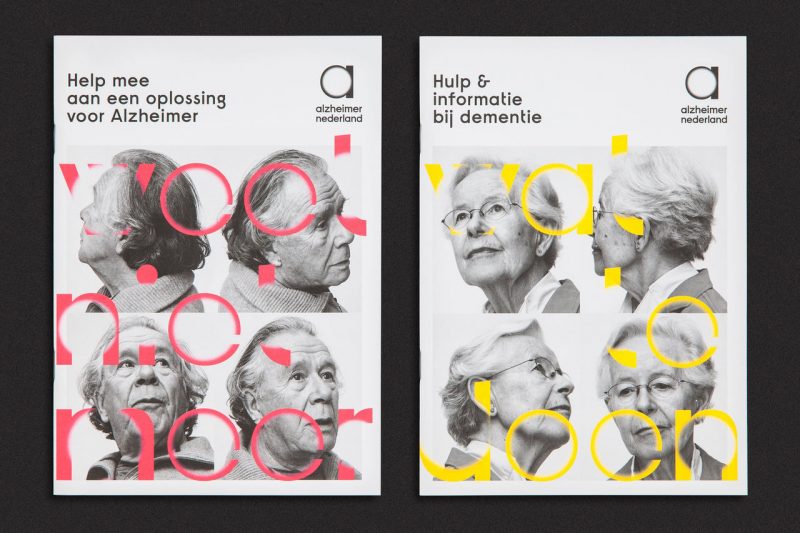design
Strategist Tom Dorresteijn on creative collaboration
‘The best way to the brain is through the heart’
According to Tom Dorresteijn of Studio Dumbar, his team always manages to surprise. With a strong reputation in the field of visual identities, the studio attracts clients and talent from all over the world. The studio’s work has certainly made an impression on me (personal favorite: the police identity pictured above) but from a professional point of view I also wondered how a phenomenon like Studio Dumbar looks at creative collaboration.
What follows is a conversation I had at Studio Dumbar with strategic director Tom Dorresteijn about organized freedom, the power of sensitivity and his palpable aversion to mediocrity.

When you click on “About” on your website it says: We create meaningful brands.
What are meaningful brands?
“It sounds a bit pretentious I suppose, but it basically means that we always look for meaning. The brands we work for represent the entire company, or the entire organization, whether it’s a tech start-up, an NGO or a more traditional company. Company brands always encompass the complexity of an entire organization, including the identity, culture and, except for start-ups, the “heritage” of that organization. For example, we never work for “fast moving”; product brands that are primarily focused on short-term sales. That’s a completely different field and mainly thinking outside-in: everything’s a bit more one-dimensional. With company brands you’re dealing with multiple dimensions; there are business and commercial goals, target groups, but also a (deep) rooted culture that has to do with identity and origin. We have to bring this together in a future-oriented way.”

“Our principle is: “get to the core”, define the essence of an organization. What is a brand or company really about? We first apply that strategic focus, together with the client. Clear and simple. And then we bring it to life with a design that in essence is also as simple as possible. If you do that, the result will automatically be “powerful”. Hence our trinity: pure, simple, powerful.”
How do you get to the core?
“It starts with research and strategy. People often think that this is the rational part of the process, with the stereotype of the rational strategist in mind, the business consultant who researches everything and analyzes data. But that won’t bring you far because in life few decisions are made purely rational. It’s about touching people’s hearts. The fastest and most sustainable way to the brain is through the heart.”

“Touching the heart must ultimately happen with design, but that won’t happen if you start with a clinical strategy report. That’s why I let intuition play a role in the strategic phase. You have to be able to be creative in how you get to that core, and especially in how you put that core into words and make it small and simple.
Designers play an important role in this first phase. It just doesn’t work if I do all sorts of exciting things with clients on a strategic level and then throw a report on the designers’ plates with the words: ‘this is the idea, make it look good’.”
So how does it work then?
“It’s important to get designers involved right from the start. Get a sense of who it is you’re working for. Sometimes that means getting a tour, or looking at a production process. We worked for a company that installs deep-sea cables to connect wind farms to the grid. And so naturally we went along on one of those boats.”

“It may sound disrespectful or stereotypical, but you don’t trigger designers with an hour-long PowerPoint presentation. You need to get a feel of a place, see where they drink their coffee, listen to what people say to each other, how they talk, see what the office looks like. That tells designers way more than a briefing.
The same also applies to me as a strategist. You can give me 100,000 briefings, but I have to see the company for myself. I need to walk in there, have conversations, meet people, because only then will I get the full picture. Written words are never enough. Reality is always there, you just have to be sensitive enough to pick it up.”
Do you believe that you should naturally have that sensitivity? Or can you train that?
“You can develop it further by getting a more professional, more conscious look. But basically you have to have that sensitivity and intuition. Our designers all have it, otherwise they couldn’t be a designer. They have to be able to feel that it will lead to something. They have to feel where it needs to go to do their job. That’s why this is such a feminine organization. The majority of the people that work here are male, but there isn’t a lot of testosterone. And super important: everyone is very true to himself or herself. Nobody likes pretension and ego, but here there really is no room for that. It simply doesn’t go with how we work.”
I think that’s one of the most beautiful parts of the creative process; the fact that you have to be very vulnerable in order to achieve something.
“Yes, because it sounds soft, a feminine organization. But I know few professions that are as tough as designing. You can see that clearly in our reviews. As soon as strategists and designers have become acquainted with a client, we come together to pick a direction. Liza is the Creative Director, but she doesn’t dictate what direction we’ll be taking. It works the other way around. The designers come up with the direction and ideas and then we decide together what to cultivate and channel. So decisions have to be made. And we always make those decisions together. Designers are as much colleagues as competitors. Because your work, the thing that you’ve put your heart and soul into, is evaluated collectively. It all happens in a friendly, but also very clear way. If none of your ideas make the final cut, but those of a trainee do – two times in a row –then that’s a tough pill to swallow. ”

Do you use certain methodologies for internal reviews?
“We often call the solutions we come up with “organized freedom” and that also describes our approach. It doesn’t seem very serious, there’s no strict protocol and there’s an incredible amount of humor, but it’s a very thorough process. One thing always becomes clear in time, and that is whether we think we will get there or not. Poor quality is never accepted; we keep on pushing until we feel it’s really good. We are sharp on budget; but our priority is whether it’s good. That’s actually the thing that matters most. Liza and I really don’t like mediocrity. We hate easy ideas. And I don’t mean that things have to be elitist. Not at all. It can be popular and commercial. But it has to be pure and original. The world is already full of easy things, we just can’t do that.”
“But methodologies…. No. There’s a clear process, but there are no design methods or dogma’s. The reviews are very important to us. In the project team, everyone shows what he or she has made and what is good or bad about it, and where there is still some doubt. In the meantime, Liza has already sat at everyone’s table to coach. My question is always: is there something there that you like? Then we see if we agree. And if we don’t, then that’s interesting. Why does he or she like that I don’t?”
It’s a little disappointing that I can’t share methodologies in this interview that hold a promise of your way of working. At the same time, it’s a confirmation of a recent personal lesson: there’s so much value in not forcing things. What’s your view on creativity within your organized freedom, is that more an individual matter or a group thing?
“The core of creativity is individual. But influencing each other by working together and selecting makes things better. That’s why talent is given space and is encouraged. Just like we do with our clients, we also look at the essence of our team, the essence of their talent. When you discover that, you will achieve the greatest of achievements. I don’t believe in managing rules. And the same applies to Dept. It’s “freedom, very well organized”, which is why we feel very much at home there. (Edit: in 2016, Studio Dumbar became part of digital agency Dept).”

“It starts with our own responsibility and freedom. That’s why we select on talent in combination with personality. That almost always goes well, except sometimes we don’t sufficiently realize what the effect of Studio Dumbar can be. People often come from abroad to work with us and look up to Studio Dumbar. They’re often very relieved that it’s all super relaxed here. And yet it sometimes happens that they stare into the headlights like a deer. They just shut down because they feel a kind of obligation, which means they’ve lost their natural way of producing something. Sometimes it happens that people need more structure, but we simply don’t work like that. We mainly create space for our trinity: pure, simple, powerful. Based on the deep-rooted belief that creativity works best when it’s original.”